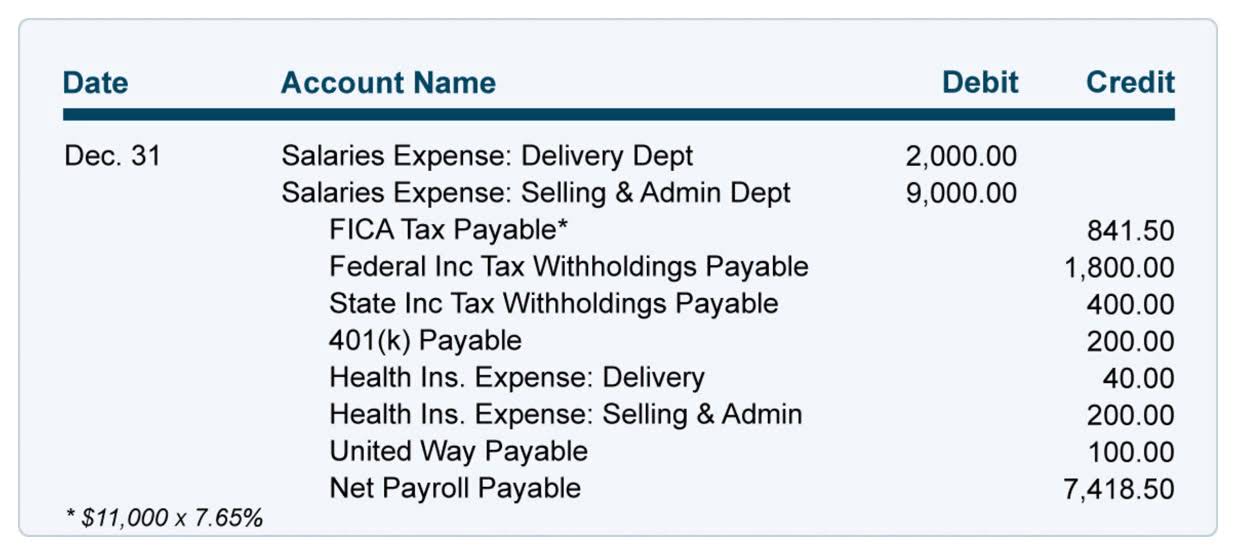
These accounts also ensure that you follow the matching principle in accounting, which states that you record expenses in the same period you incur them. The Notes Receivable account documents the total value of any promissory notes held by the company. To obtain a cash payout before the note reaches maturity, you can sell these notes to a bank or other financial institution for some price below the note’s face value. The following are examples of commonly-used contra asset accounts you could create to better understand your business financials. However, it’s important to keep in mind that you can create any contra account you want to more clearly describe your business — this is not an exhaustive or definitive list. For liability and revenue accounts, credit transactions will increase and debit transactions will decrease the account balances.
Contra revenue
Management may disclose its method of estimating the allowance for doubtful accounts in its notes to the financial statements. Accounts receivable (A/R) has a debit balance, but the allowance for doubtful accounts carries a creditbalance. GAAP, the allowance for doubtful accounts represents management’s estimate of the percentage of “uncollectible” accounts receivable (i.e. the credit purchases from customers that are not expected to be paid). The amount due from the customer has been posted to the accounts receivable ledger, whereas the amount due to the supplier is posted to the accounts payable ledger. The difference between an asset’s account balance and the contra account balance is known as the book value. Those who are struggling with recording contra accounts may benefit from utilizing some of the best accounting software currently available.
- The accumulated depreciation account is perhaps the most common contra asset account used by business owners.
- A contra revenue represents any deductions or offsets that need to be removed from gross revenue to provide a clearer understanding of actual income — such as in the example just provided.
- However, these vehicles have experienced significant wear and tear in the intervening years.
- Our goal is to deliver the most understandable and comprehensive explanations of climate and finance topics.
- This balance is used to offset the value of the asset being depreciated, so as of September 1, your $8,000 asset now has a book value of $7,866.67.
- The transfer of cash from one account to another is also considered as a contra entry.
Contra Entry Journal
- For example, Accumulated Depreciation is a contra asset account, because its credit balance is contra to the debit balance for an asset account.
- This type of account is a contra asset that reduces the amount of the gross accounts receivable account.
- For example, when your company borrows money, you would identify that debt in a Notes Payable account.
- In this way, the historical cost, the amount of write-off, and the book value of an asset can always be seen on the balance sheet.
- The net amount is often referred to as the carrying amount or perhaps the net realizable amount.
- The net amount – i.e. the difference between the account balance post-adjustment of the contra account balance – represents the book value shown on the balance sheet.
- And when your business still has some of these outdated, unwanted, or unusable items in your inventory, you’ll want to offset the lost value of these assets in your general ledger and balance sheet.
Contra revenue accounts typically offset revenue accounts in a firm’s income statement. A contra asset account is an asset account where the account balance is a credit balance. It is described as “contra” because having a credit balance in an asset account is contrary to the normal or expected debit balance. (A debit balance in a contra asset account will violate the cost principle.) Learn more about contra asset accounts. In a sales returns and allowances contra revenue account, you offset the balance in the sales revenue account. When the contra account reads $500 and the normal credit balance is $100,000, then your net sales are $99,500.

What is a contra revenue account?
Although you have not officially written off these debts yet, you show them to be a negative balance because you don’t believe the customer will pay you. The reason you show a contra asset on a balance sheet is so you can see the overall net balance of a particular asset and to give investors a more accurate look into your company’s financial activity. An example of Accounts Receivable (AR) is when a graphic design agency completes a project for a client and issues an invoice for $2,000, payable within 30 days.

Simply hit Control + N under the Chart of Accounts or Edit, then click New (to create a new account). The contra asset account, which is allowance for doubtful accounts, indicates the original (gross) amount you report in the accounts receivable. It also shows the carrying (net) amount of $19,000, which you report to your firm’s balance sheet. A contra account is a general ledger account that offsets the balance of a corresponding account with which it’s paired. If you debit the contra account, ensure that you offset the related account with a credit balance. In essence, contra accounts allow you to report your firm’s gross and net amounts.
- To illustrate the contra revenue account Sales Returns and Allowances, let’s assume that Company K sells $100,000 of merchandise on credit.
- This amount represents a short-term asset on the company’s balance sheet and indicates the credit extended to customers.
- CCC estimates that 5% of accounts receivable will most likely be unrecoverable.
- For example, based on previous experience, a company may expect that 3% of net sales are not collectible.
- We strive to empower readers with the most factual and reliable climate finance information possible to help them make informed decisions.
- The company must be aware of outliers or special circumstances that may have unfairly impacted that 2.4% calculation.
Balance Sheet in Accounting: What You Need to Know
Each account in a general ledger will be designated debit or credit accounts depending on whether they’re categorized as assets, liabilities, revenues or expenses. At the end of year 20, the car and the accumulated depreciation accounts will be written off from the balance sheet, as the car will be a fully depreciated asset. For example, an asset was purchased by a company for $100,000 – that is, the historical cost of the asset was $100,000 – and its contra asset counterpart has a balance of $30,000. Note that the asset account balance represents the purchase price of the asset in question, also known as its historical cost.
- A contra liability is a general ledger account with a debit balance that reduces the normal credit balance of a standard liability account to present the net value on a balance sheet.
- A contra asset account is an account in the balance sheet that offsets the balance of a regular asset account.
- When accounting for assets, the difference between the asset’s account balance and the contra account balance is referred to as the book value.
- The company can recover the account by reversing the entry above to reinstate the accounts receivable balance and the corresponding allowance for the doubtful account balance.
- Yes, the same person can handle both Accounts Payable (AP) and Accounts Receivable (AR), especially in smaller businesses.
Contra asset account example
If the balance in your allowance for doubtful accounts has a credit of $1,000 and your accounts receivable has $20,000 in normal debit balance, then the net value of the receivables is $19,000. A normal asset has a debit balance, while a contra asset sits against this to show the net balance of both assets on your financial statement. The allowance for doubtful accounts is not specifically reported, but the 10(K) reported that contra expense account the allowance is immaterial to the amount. This make sense because Home Depot wouldn’t be carrying accounts receivable with long payment terms. Most accounts receivable would just be the time between purchase and credit card settlement. Another type of contra account is known as “contra revenue,” which is used to adjust gross revenue to calculate net revenue, i.e. the “final” revenue figure listed on the income statement.
A contra account is also known as a valuation allowance, because it adjusts the carrying value of the account with which it is paired. The list of asset accounts on your general ledger and balance sheet conveys the combined, potential value of all of the tangible and intangible items that your organization possesses. But in the real world, converting all of that potential into hard cash is highly unlikely, if not impossible. Instead, you need to record this value gap, and a contra asset account serves that purpose.

